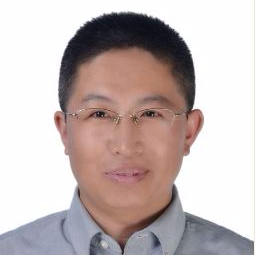Advances of Polymeric Membranes
A special issue of Polymers (ISSN 2073-4360). This special issue belongs to the section "Polymer Membranes and Films".
Deadline for manuscript submissions: closed (15 March 2023) | Viewed by 11298
Special Issue Editor
Interests: heterocyclic poly(aryl ether)s; high-performance polymer; polymer membrane materials; ion exchange membranes; nanofiltration membranes; ultrafiltration membranes
Special Issue Information
Dear Colleagues,
Membrane technology is often used to support environmental pollution control, energy conservation and emission reduction and to protect people’s livelihood. It is of great significance to alleviate urban water shortage and adjust energy structure and industrial transformation and upgrading. Membrane materials, including metal materials, inorganic materials and polymer materials, play an important role in membrane technology, determining the morphologies and properties of membranes to a certain extent. Because polymer membrane materials have many advantages, such as easy molecular design, good processability, low cost and diversity, they have become the most widely used and studied membrane materials, with use in the petrochemical, light industry, textile, food, medicine, environmental protection and energy fields.
This Special Issue of Polymers is concerned with the synthesis and characterization of polymer membrane materials, fabrication and modification of polymer membranes, membrane structure and applications of polymer membranes. Topics may include polymer membrane materials, ultrafiltration membranes, nanofiltration membranes, ion exchange membranes, proton exchange membranes, amphoteric membranes, hemodialysis membranes, dehumidification membranes, composite membranes, processes of polymer membranes, membrane fabrication and modification. Full research papers, communications, and review articles are welcome.
Dr. Shouhai Zhang
Guest Editor
Manuscript Submission Information
Manuscripts should be submitted online at www.mdpi.com by registering and logging in to this website. Once you are registered, click here to go to the submission form. Manuscripts can be submitted until the deadline. All submissions that pass pre-check are peer-reviewed. Accepted papers will be published continuously in the journal (as soon as accepted) and will be listed together on the special issue website. Research articles, review articles as well as short communications are invited. For planned papers, a title and short abstract (about 100 words) can be sent to the Editorial Office for announcement on this website.
Submitted manuscripts should not have been published previously, nor be under consideration for publication elsewhere (except conference proceedings papers). All manuscripts are thoroughly refereed through a single-blind peer-review process. A guide for authors and other relevant information for submission of manuscripts is available on the Instructions for Authors page. Polymers is an international peer-reviewed open access semimonthly journal published by MDPI.
Please visit the Instructions for Authors page before submitting a manuscript. The Article Processing Charge (APC) for publication in this open access journal is 2700 CHF (Swiss Francs). Submitted papers should be well formatted and use good English. Authors may use MDPI's English editing service prior to publication or during author revisions.
Keywords
- Polymer membrane materials
- Ultrafiltration membranes
- Nanofiltration membranes
- Ion exchange membranes
- Proton exchange membranes
- Amphoteric membranes
- Hemodialysis membranes
- Dehumidification membranes
- Composite membranes
- Processes of polymer membranes
- Membrane fabrication/modification
Benefits of Publishing in a Special Issue
- Ease of navigation: Grouping papers by topic helps scholars navigate broad scope journals more efficiently.
- Greater discoverability: Special Issues support the reach and impact of scientific research. Articles in Special Issues are more discoverable and cited more frequently.
- Expansion of research network: Special Issues facilitate connections among authors, fostering scientific collaborations.
- External promotion: Articles in Special Issues are often promoted through the journal's social media, increasing their visibility.
- e-Book format: Special Issues with more than 10 articles can be published as dedicated e-books, ensuring wide and rapid dissemination.
Further information on MDPI's Special Issue polices can be found here.






